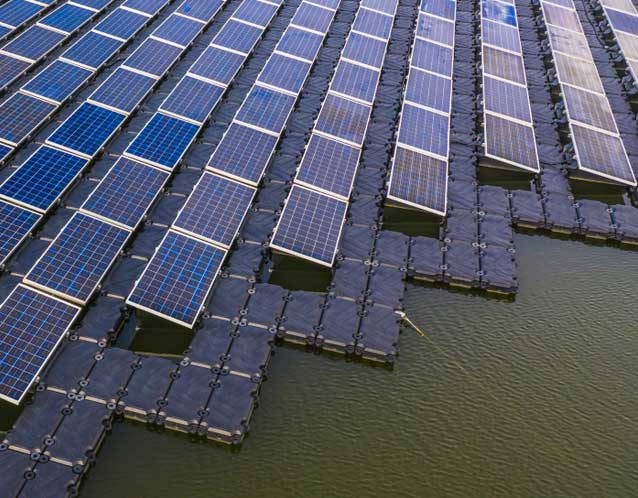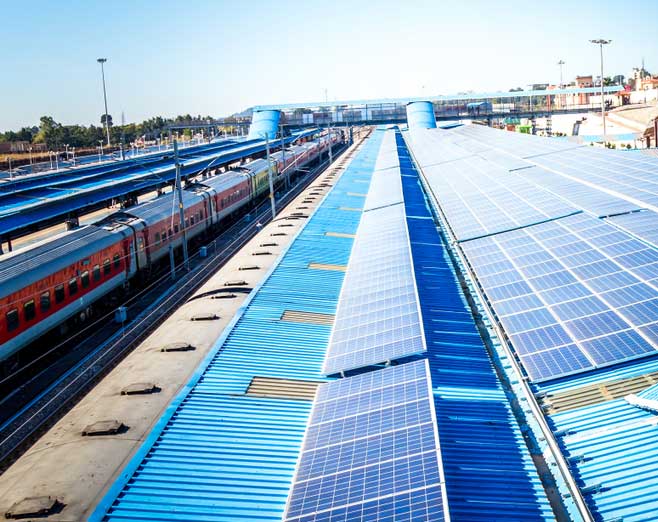Landfill Farms
In our journey through the solar industry, we at Venture Steel Group have observed an incredible transformation—turning landfill sites into sources of clean, renewable energy. This initiative isn't just about repurposing what's been wasted; it's about providing a vital solution to the often limited redevelopment options for landfill sites. By discussing these sustainable approaches, we aim to shed light on their role in reducing carbon emissions and fostering greater sustainability within the solar panel industry.
The impact on the environment is significant. The conversion of former rubbish dumps into sites for solar panels carries the promise of substantially reducing land waste. This shift has the potential to positively alter the future landscape of solar panel operations. Through such discussions, we highlight the importance of repurposing neglected areas into solar power plants, thereby unlocking the potential of previously unusable land. This practice doesn't just maximise the utility of land; it also lessens the overall footprint of solar panel installations. Furthermore, it contributes to alleviating the issue of land scarcity, especially in urban areas where space is increasingly valuable.
Discussing the transformation of unused spaces, such as landfill sites, into ground-mounted solar panel installations, we spotlight the significant enhancement to the potential for future solar panel operations, all the while minimising land wastage.
In terms of ground-mounted solar panels, a robust metal frame and piles are utilised to firmly secure the panels into the ground. These panels are then attached to this frame, which is deeply embedded into the ground, ensuring stability and durability against various weather conditions. We share these insights to enrich the industry's understanding of solar installation techniques. If you would like to know how solar panels are ground mounted, you can read our article here.
By engaging in discussions around utilising neglected spaces like landfill sites for solar panel installations, we aim to serve a dual purpose: repurposing the land while tapping into a sustainable energy source.
The global momentum behind solar landfill initiatives—referred to as solar panels on landfills or solar dumping—is noteworthy. In the UK, the development of landfill solar farms is progressing, marking an important step towards fostering clean energy production and playing a crucial role in mitigating the environmental impact of landfills.


What benefits will project’s like this have on the UK?
The Good Stuff Floating Solar Farms Bring to the UK:
- Keeping the UK pretty: Floating solar panels sit on water, so we don’t have to cover up our lovely countryside with them. It’s all about getting the energy we need without losing the green and pleasant land we love.
- Making more power: These clever floating panels can follow the sun all day long. That means they catch more sunlight and make more electricity than the ones that just sit still.
Floating Solar Panel Farms
.
Ever pondered how floating solar farms are brought to life? At Venture Steel Group, we're fascinated by the innovative journey from conception to realisation of these marvels of renewable energy.
Setting the Scene: The Foundation of Floating Solar Farms
The adventure begins with securing buoyant structures to the surface of a water body, ensuring they remain steadfast. Onto these floating bases, solar panels are meticulously mounted using specialised solar panel frame mounts designed for this unique environment.
This method opens up new horizons for the deployment of solar farms across lakes and reservoirs, bringing with it a slew of benefits for renewable energy production.
Harnessing the Power of Water: The Next Wave of Solar Innovation
The progression of floating solar panel technology marks a significant leap forward. Referred to as solar panels on water or floating solar power plants, this innovation capitalises on the untapped potential of aquatic spaces—from tranquil lakes to the vast expanse of seas. These installations are not just stationary power producers; they have the capability to follow the sun across the sky, optimising their exposure to sunlight. This dynamic ability significantly boosts their efficiency and, consequently, the amount of energy they generate.
At Venture Steel Group, we're excited about the possibilities that floating solar technology brings to the table. By tapping into previously underutilised bodies of water, we're not just expanding the potential for renewable energy generation; we're also contributing to a more sustainable and efficient future, one floating solar farm at a time.
Why do we think floating solar farms will be beneficial
Understanding the innovative installation process and recognising the energy advantages of floating solar farms is crucial for those of us in the industry. At Venture Steel Group, we're keen to share insights into why floating solar farms are becoming a significant part of the renewable energy landscape.
The Cooling Advantage: Enhancing Efficiency
One of the standout benefits of floating solar farms is their ability to address the common issue of overheating in solar panels. It's well-documented that as temperatures rise, the efficiency of solar panels can decrease, leading to reduced electricity generation. The unique placement of floating solar panels on water bodies introduces a natural cooling mechanism. This ensures that the panels remain within their ideal operating temperature range, which can significantly boost their efficiency. In fact, this cooling effect has the potential to enhance electricity production by up to 15%, a substantial increase in the world of renewable energy generation.
Embracing Tracking Technology for Maximum Yield
Moreover, floating solar farms are at the forefront of adopting advanced tracking technology. This innovation enables the panels to adjust their angle throughout the day to follow the sun's trajectory, maximising sunlight exposure. The integration of tracking technology is particularly effective when combined with bifacial panels, which can absorb sunlight from both sides. This combination can lead to an impressive increase in energy yield, potentially boosting production by as much as 35%.
By discussing these technological advancements, we at Venture Steel aim to highlight the potential and efficiency of floating solar farms. These developments not only make floating solar an attractive option for renewable energy but also exemplify the innovative solutions being explored and discussed within the solar industry to meet our future energy needs sustainably.
Solar Railways
Ever wondered about the integration of solar panels into the railway network?
The leap forward in using solar panels within the rail industry is brimming with potential, a fact underscored by the groundbreaking success of the world's first solar-powered railway line in Hampshire. This pioneering project has paved the way for envisioning larger-scale ventures that could supply trains directly with renewable energy.
Solar Rails: Brightening the Future of Rail Travel
- A Testament to Potential: The Hampshire line's triumph is a beacon, demonstrating how solar power can effectively energise the rails, hinting at the vast possibilities for expansion across the network.
- Cleaner, Greener Journeys: By harnessing the sun's power, we're taking significant strides in slashing air pollution and greenhouse gas emissions. This transition to solar significantly contributes to a healthier planet and aligns with global sustainability goals.
- Cost-Effective Operations: Beyond the environmental benefits, the shift towards solar energy in the railway sector offers a practical advantage—lowering operational costs. Sustainable energy sources like solar power promise a more economical way of running our railway networks, making it an attractive proposition for the industry's future.

What are the future plans being made to improve the integration of solar panels within the rail industry?
As we explore new frontiers in renewable energy, the rail industry stands at the cusp of a transformative journey with solar power. Here at Venture Steel Group, we're keen to spotlight significant strides towards integrating solar panels within railway networks, promising a brighter, more sustainable future.
On Track for Solar Power: Innovations in the Rail Industry
- Sun-Ways, a Swiss Start-Up Venture: On the verge of a breakthrough, Sun-Ways plans to install solar panels near Buttes train station in Switzerland. This project, awaiting the green light from the Federal Office of Transport, aims to harness the sun's power directly beside the tracks.
- Scheuchzer's Solar-Powered Tracks: Swiss track maintenance pioneer, Scheuchzer, has rolled out a train designed to lay photovoltaic panels along its journey. This innovative approach allows for quick and efficient solar panel deployment across the rail network, marking a leap forward in railway sustainability.
- A Terawatt-hour from the Tracks: The Swiss national rail network is on track to generate a staggering one Terawatt-hour (TWh) of solar energy annually. This remarkable potential highlights the significant role solar panels could play in energising the railway industry.
These initiatives are not just about cutting carbon emissions; they represent a bold step towards fostering sustainable energy sources within the rail sector. As we champion these advancements, the integration of solar technology into the rail industry exemplifies our commitment to pioneering sustainable solutions that propel us towards a cleaner, greener future.
Conclusion
In summary, the solar panel industry is poised for substantial transformations in the forthcoming years.
Repurposing rubbish dumps into solar farms isn't just about minimising wasted land; it's also about establishing a sustainable energy source.
Furthermore, the introduction of floating solar farms and the integration of solar panels into the railway network represent innovative strides that will bolster the advancement of renewable energy.
As we progress towards 2024, these trends are unquestionably set to mould the future landscape of the solar panel industry.